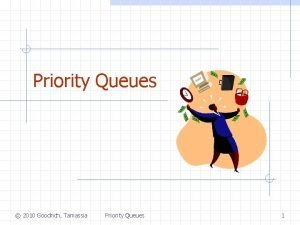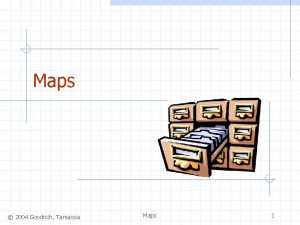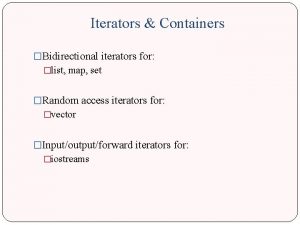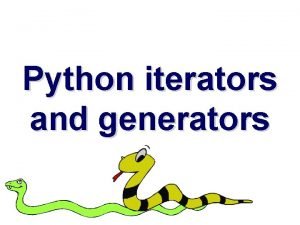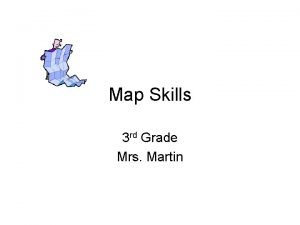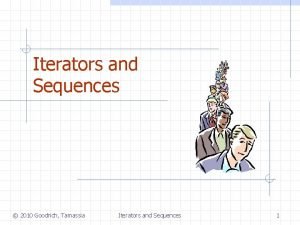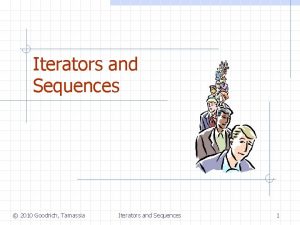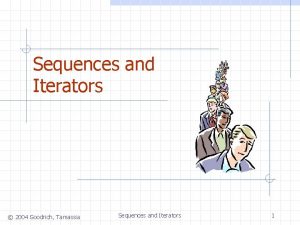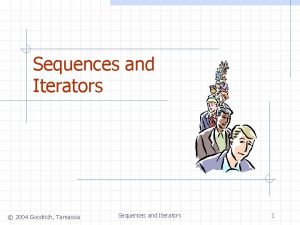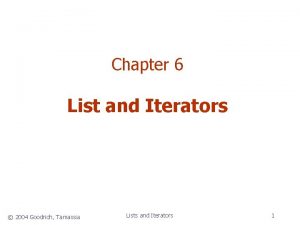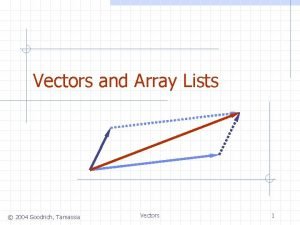Sequences and Iterators 2004 Goodrich Tamassia Sequences and







- Slides: 7

Sequences and Iterators © 2004 Goodrich, Tamassia Sequences and Iterators 1

Sequence ADT (§ 5. 3) The Sequence ADT is the union of the Vector and List ADTs Elements accessed by n n List-based methods: n Rank, or Position Generic methods: n size(), is. Empty() Vector-based methods: n elem. At. Rank(r), replace. At. Rank(r, o), insert. At. Rank(r, o), remove. At. Rank(r) © 2004 Goodrich, Tamassia first(), last(), prev(p), next(p), replace(p, o), insert. Before(p, o), insert. After(p, o), insert. First(o), insert. Last(o), remove(p) Bridge methods: n Sequences and Iterators at. Rank(r), rank. Of(p) 2

Applications of Sequences The Sequence ADT is a basic, generalpurpose, data structure for storing an ordered collection of elements Direct applications: n n Generic replacement for stack, queue, vector, or list small database (e. g. , address book) Indirect applications: n Building block of more complex data structures © 2004 Goodrich, Tamassia Sequences and Iterators 3

Linked List Implementation A doubly linked list provides a reasonable implementation of the Sequence ADT Nodes implement Position and store: n n n element link to the previous node link to the next node Position-based methods run in constant time Rank-based methods require searching from header or trailer while keeping track of ranks; hence, run in linear time Special trailer and header nodes/positions header trailer elements © 2004 Goodrich, Tamassia Sequences and Iterators 4

Array-based Implementation elements We use a circular array storing positions A position object stores: n n Element Rank Indices f and l keep track of first and last positions 0 1 3 positions S f © 2004 Goodrich, Tamassia 2 Sequences and Iterators l 5

Sequence Implementations Operation size, is. Empty at. Rank, rank. Of, elem. At. Rank first, last, prev, next Array 1 1 1 List 1 n 1 replace. At. Rank insert. At. Rank, remove. At. Rank insert. First, insert. Last insert. After, insert. Before remove 1 1 n n 1 1 1 © 2004 Goodrich, Tamassia Sequences and Iterators 6

Iterators (§ 5. 4) An iterator abstracts the process of scanning through a collection of elements Methods of the Object. Iterator ADT: n n object() boolean has. Next() object next. Object() reset() Extends the concept of Position by adding a traversal capability Implementation with an array or singly linked list © 2004 Goodrich, Tamassia An iterator is typically associated with an another data structure We can augment the Stack, Queue, Vector, List and Sequence ADTs with method: n Object. Iterator elements() Two notions of iterator: n n Sequences and Iterators snapshot: freezes the contents of the data structure at a given time dynamic: follows changes to the data structure 7
